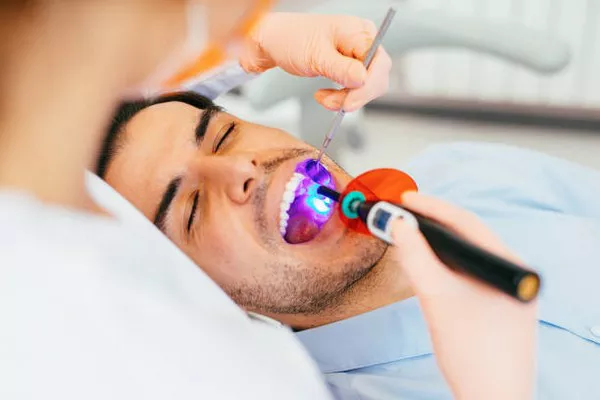Dental health is a vital aspect of overall wellness, and addressing cavities promptly is crucial to maintaining a healthy smile. One common dental procedure is the filling of cavities, which can vary in duration depending on several factors. This article will delve into the specifics of how long it typically takes to fill 3 cavities, the factors influencing this duration, and what patients can expect before, during, and after the procedure.
Procedure Timeframe
The time it takes to fill three cavities can vary, but on average, patients can expect the procedure to last between 45 and 60 minutes. Each cavity filling might take anywhere from 20 to 60 minutes, depending on its complexity.
Average Time for Filling Three Cavities:
45-60 Minutes: This is the typical range for filling three cavities. It includes the time for anesthesia, preparation, and the actual filling process.
Time for a Single Cavity Filling:
20-60 Minutes: The duration for filling a single cavity can vary widely. Simple fillings might take only 20 minutes, while more complex cases could require up to 60 minutes.
Factors Affecting Duration
Several factors can influence the time required to fill cavities. These include:
Dentist’s Skill and Experience: An experienced dentist may complete the procedure more efficiently while ensuring high-quality results.
Filling Material: Different materials, such as amalgam, composite, gold, or ceramic, have varying application processes and curing times.
Cavity Complexity: The size and location of the cavities can affect the procedure duration. Cavities in hard-to-reach areas or those that are larger may take more time.
Patient Cooperation: The patient’s ability to remain still and follow instructions can also impact the time needed.
Number of Cavities: Although we are considering three cavities in this article, additional cavities would proportionally increase the procedure time.
see also:Maximizing Teeth Whitening Results: The Art of Eating After Whitening Strips
Preparation and Recovery
Preparation Steps:
Consultation and Examination: Before the procedure, a thorough examination and consultation are conducted. This includes X-rays to assess the extent of decay.
Anesthesia: Local anesthesia is administered to numb the area around the affected teeth, ensuring the patient feels no pain during the procedure.
Cleaning and Isolation: The dentist will clean the teeth and isolate the area with a rubber dam to keep it dry and free of saliva.
Recovery Time:
Post-procedure, patients can expect a short recovery period. Here’s what typically happens:
Numbness: The effects of local anesthesia can last a few hours. During this time, patients should avoid eating to prevent biting their cheek or tongue.
Sensitivity: Some sensitivity to hot, cold, or pressure is common after the anesthesia wears off. This usually subsides within a few days.
Eating and Drinking: It’s advisable to wait until the numbness completely wears off before eating. Soft foods are recommended initially.
Filling Materials
Different filling materials can influence both the duration of the procedure and the post-procedure experience. The main types of materials used are:
Amalgam (Silver) Fillings: These are durable and often used for back teeth. They can take less time to apply but require a longer curing period.
Composite (White) Fillings: These are aesthetically pleasing and bond directly to the tooth. The process might take longer as the composite is applied in layers and cured with a special light.
Gold Fillings: These are less common due to their cost and the time needed for fabrication and placement.
Ceramic Fillings: These are similar to composite fillings in terms of aesthetics and durability, but they are more time-consuming to place and often require two visits if fabricated outside the mouth.
What to Expect During the Procedure
The process of getting a filling involves several steps:
Anesthesia: The dentist will administer a local anesthetic to numb the area.
Decay Removal: Using a drill, laser, or air abrasion, the dentist removes the decayed portion of the tooth.
Tooth Preparation: The cavity is cleaned and shaped to prepare for the filling.
Filling Placement: Depending on the material used, the filling is placed and shaped to fit the tooth’s contours. Composite fillings are applied in layers and cured with a light.
Polishing: Once the filling is in place, the dentist polishes it to ensure a smooth surface and proper bite alignment.
see also:How to Effectively Remove Tartar from Your Teeth
Post-Procedure Care
Proper care after getting fillings is crucial to ensure they last and that the teeth heal properly. Here are some tips:
Oral Hygiene: Maintain good oral hygiene by brushing twice a day with fluoride toothpaste and flossing daily.
Diet: Avoid hard or sticky foods that can dislodge the filling. Chewing on the opposite side of the mouth can also help immediately after the procedure.
Follow-Up Appointments: Attend any scheduled follow-up visits to ensure the fillings are in good condition.
Monitor for Issues: Be aware of any persistent pain, sensitivity, or discomfort and report these to the dentist as they may indicate a problem with the filling.
Scheduling Considerations
When planning for a dental filling appointment, consider the following:
Allow Extra Time: While the procedure might be scheduled for an hour, it’s wise to allocate extra time for any unforeseen delays or additional work that might be needed.
Transportation: If anesthesia is used, consider arranging transportation as some patients may feel groggy or disoriented post-procedure.
Rest: Plan for some downtime after the appointment to recover, especially if multiple fillings are done.
Consultation Advice
For an accurate estimate and personalized advice, it is essential to consult with your dentist. They can provide a detailed plan based on the specifics of your dental health, the type and number of cavities, and your overall medical condition.
Conclusion
Getting three cavities filled is a common and straightforward dental procedure, typically taking between 45 and 60 minutes. The time required can be influenced by various factors, including the complexity of the cavities, the materials used, and the dentist’s experience. Proper preparation and post-procedure care are vital for a smooth experience and optimal results. Always consult with your dentist to get the most accurate estimate and advice tailored to your situation. With the right care, dental fillings can effectively restore the health and function of your teeth, contributing to a confident and healthy smile.
FAQs about Dental Fillings and Cavities
1. When Can I Eat After 3 Fillings?
After getting 3 fillings, it’s generally advised to wait until the local anesthesia wears off before eating. This usually takes about 1-3 hours. Eating while still numb can risk biting your tongue or cheek. Once the numbness is gone, start with soft foods and avoid chewing directly on the filled teeth for the first 24 hours if composite fillings were used. If amalgam (silver) fillings were used, avoid chewing on the filled teeth for at least 24 hours to allow the material to harden.
2. Is 3 Cavities a Lot?
Having 3 cavities is not uncommon, but it can be considered more than average, especially if they occur within a short period. It can indicate a need for better oral hygiene practices or dietary changes. Regular brushing, flossing, and dental check-ups are essential to prevent cavities. If you frequently get cavities, it may be worth discussing with your dentist for personalized advice on improving your oral health routine.
3 .How Long Will 3 Cavities Take to Fill?
The time required to fill 3 cavities depends on their size, location, and the type of filling material used. Generally, filling a single cavity takes about 20-30 minutes. Therefore, filling 3 cavities might take around 60-90 minutes in total. However, this can vary based on individual circumstances and the dentist’s efficiency. If the cavities are in different parts of the mouth, the dentist might recommend separate appointments to ensure comfort and thorough care.
4. How Many Cavities is Normal for a 25-Year-Old?
The number of cavities a 25-year-old might have can vary widely based on factors like diet, oral hygiene habits, fluoride exposure, and genetics. On average, adults may have experienced 1-2 cavities by this age. However, some individuals may have none, while others might have more. The key to preventing cavities at any age is maintaining good oral hygiene practices, such as brushing twice a day with fluoride toothpaste, flossing daily, limiting sugary snacks and drinks, and regular dental check-ups.
You Might Be Interested In






























